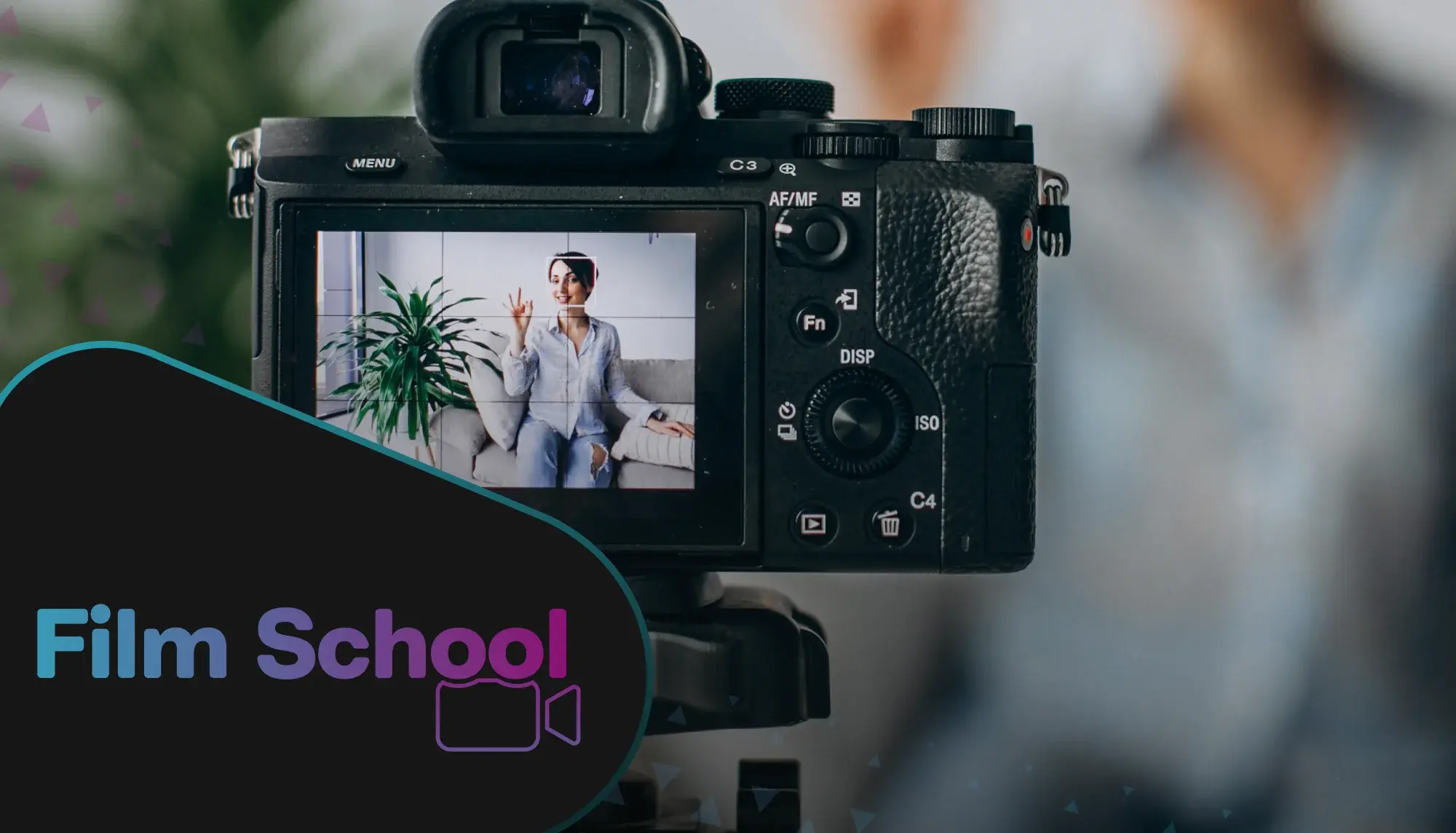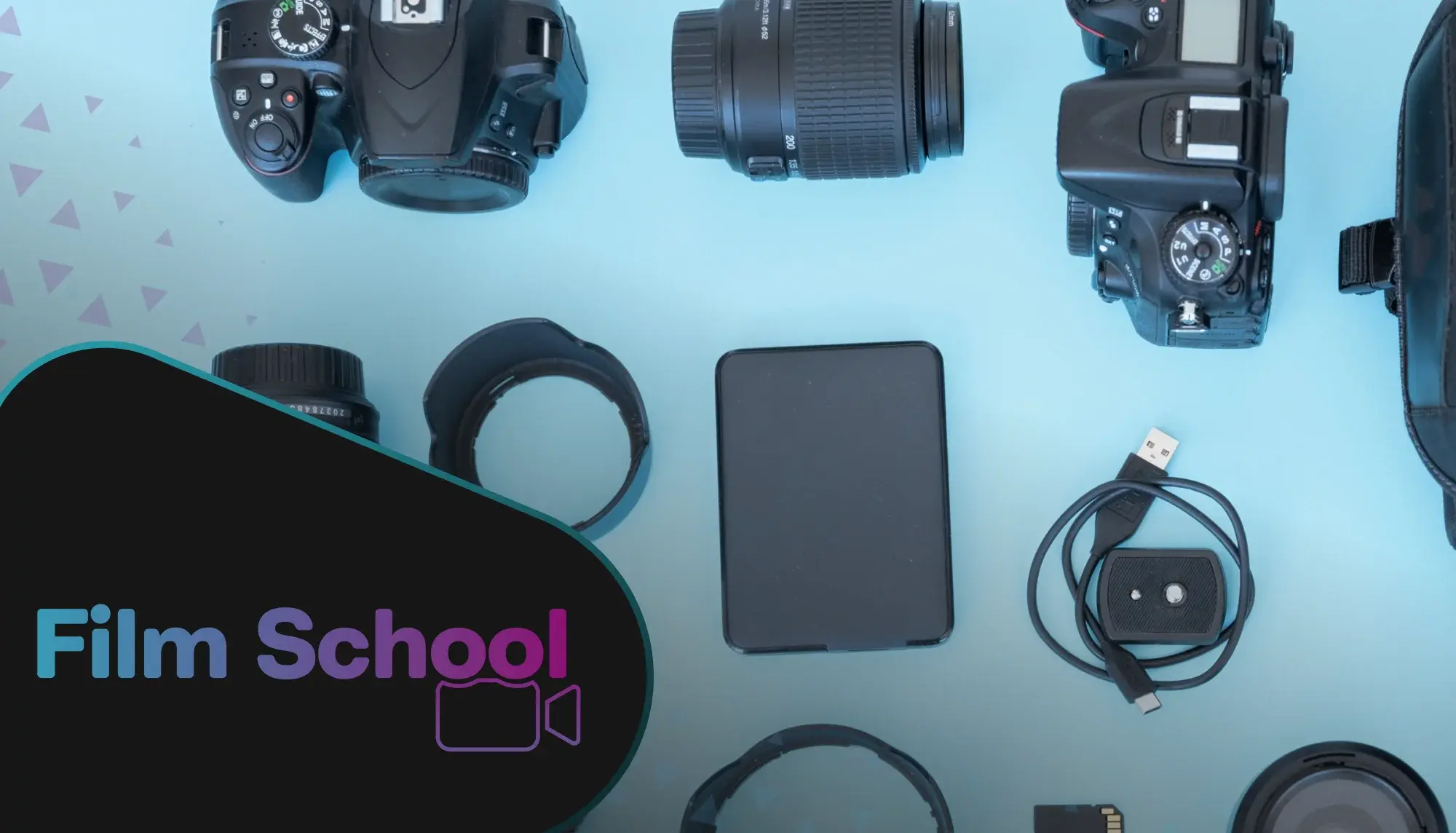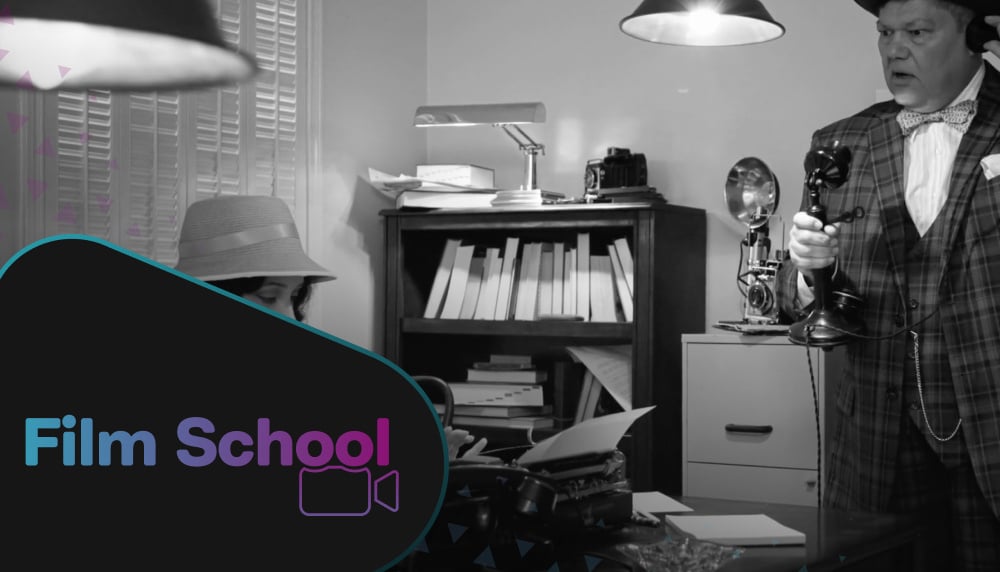
Outside of anime television shows and films, few genres in visual media have experienced the kind of growth we've seen in documentaries over the past ten years. Documentaries, of course, are non-fiction films or television shows that document real-life events or people to inform or educate the audience on a particular subject.
While documentaries have always had a place in film and TV, they mainly were appreciated by film enthusiasts or as light entertainment for winding down. However, the emergence of Netflix was a significant turning point in the rise of documentaries.
A big part of this popularity increase is that documentary filmmaking has simply improved and Netflix was a voice to champion this. Thanks to the innovative technology developed throughout the early 2010s, filmmakers have crafted documentaries that look more polished and refined, more like narrative films.
Speaking to Netflix's “Ta-Dum,” Nina Gildan Seavey, a documentary filmmaker and research professor of history, media, and public affairs at George Washington University, said, "It used to be that you would plod through these things when you were in third grade, but documentary filmmaking has really entered into a golden era. And the reason is that we don't see ourselves as purveyors of information; we see ourselves as filmmakers. The methods we use—visually, auditorily, and structurally—create narrative, dramatic story arcs."
For example, look at the trailer for The Thin Blue Line 1988.
Video via Andrew Sayre.
While the trailer is well-made and entices us to watch the documentary, its aesthetics make it feel like a documentary. With basic reenactments and passable cinematography, it has the low-budget feel typical of documentaries from that era, especially compared to feature films. In comparison, let’s look at the trailer for Netflix’s “This Is a Robbery: The World's Biggest Art Heist.”
Video via Netflix.
The editing is rhythmic, there’s a variety of professional-looking motion graphics, and even the cinematography for the interview segments is what you would expect from a feature film. Put simply, documentaries now visually and thematically resemble films with narrative structures, drawing a broader audience into becoming documentary fans. As a result, documentaries have started to create "water cooler" moments similar to those seen in popular TV series.
In 2015, office chatter wasn’t just about the latest season of "Game of Thrones"; the documentary series "Making a Murderer" overshadowed other hot topics for several weeks.
Additionally, with video-sharing platforms like YouTube and accessible editing tools like WeVideo's editor, creators, who might not have the funding of a broadcast channel or even high-end camera equipment, have been able to produce online documentaries. These have garnered millions of views, expanding the reach of documentary storytelling.
This observational documentary (we’ll touch on what that means in a moment) about filmmaker Steven Spielberg has 1.6 million views! It was created by a YouTuber who produces mini-documentaries about contemporary artists.
Video via Dodford.
We noted that the video above is an observational documentary. Why? Well, just like you can't label any music with a guitar, drums, and a bass guitar as rock music since there are countless sub-genres within rock, the same applies to documentaries; there are various characteristics and styles of documentaries. Here are the six primary types of documentaries, as well as examples of what to watch in each category.
1. Expository documentaries
When the average person thinks of documentaries, they likely imagine expository ones. In these, information is typically delivered through an omnipresent narrator, often called a “voice of God” voice-over. While the narrator may be a recognizable name, such as David Attenborough, Morgan Freeman, or Benedict Cumberbatch, they are not the filmmakers themselves.
Expository documentaries are usually produced by a studio or broadcast service, but that doesn’t mean individual filmmakers don't direct them—they are (see “Inside Job” below). The narrator’s goal is to provide context for the visual information on screen, often captured by a production crew if the footage is new. If not, the footage may consist of b-roll, archival material, or re-enactments.
Video via Aditya Shukla.
Expository documentaries are often the most straightforward form of documentary storytelling. They are created to share a direct message, using a clear and structured narrative to inform or educate the audience. You could argue that many YouTube video essays are essentially mini-expository documentaries.
Expository documentary examples
- “Planet Earth” (2006) by Alastair Fothergill
- “Inside Job” (2010) by Charles Ferguson
- “The Social Dilemma” (2020) by Jeff Orlowski
- “March of The Penguins” (2005) by Luc Jacquet
2. Participatory documentaries
Participatory documentaries are named as such because the filmmaker is involved in the process of the documentary itself, either by appearing on camera or by directly influencing the subjects, such as asking them questions.
While observational or expository documentaries aim to tell a story objectively, participatory documentaries may be viewed as less authentic due to the filmmaker's direct influence on shaping the narrative. For example, if the filmmaker hadn't asked a particular question, would they have obtained the same material to shape the story? As a result, this form of documentary storytelling is often seen as the filmmaker’s version of “truth.”
Via via Rotten Tomatoes Classic Trailers.
Documentary filmmaker Michael Moore, who frequently creates participatory documentaries, has faced consistent criticism for distorting his footage throughout his career. As such, if you intend to make a participatory documentary, including yourself as a filmmaker is a fine line to walk to preserve a semblance of the truth.
Participatory documentary examples
- “The Act of Killing” (2012) by Joshua Oppenheimer
- “Fahrenheit 9/11” (2004) by Michael Moore
- “Free Solo” (2018) by Jimmy Chin and Elizabeth Chai Vasarahelyi
3. Poetic documentaries
If someone were to set out to make a documentary with no initial subject but some filmmaking expertise, poetic documentaries might be the most accessible entry point. They are very much what they sound like, focusing on abstract experiences and images and offering the audience a view of the world through different eyes. The narrative is often loose and experimental, much like modern art, and as such, poetic documentaries tend to offer viewers an immersive (and often sensory) experience rather than conventional linear storytelling.
For example, in Terence Malick's 2011 film “The Tree of Life,” there is a 20-minute sequence depicting the creation of life. In 2016, Malick expanded that idea into what could be considered a poetic documentary, “The Voyage of Time,” which explores the creation of the universe. Of course, you can't document such an event, but that's the essence of poetic documentaries — they are unconventional and structureless.
Video via Rotten Tomatoes Trailers.
Poetic documentary examples
- “Koyaanisqatsi” (1982) by Godfrey Reggio
- “Baraka” (1992) by Ron Fricke
- “Samsara” (2011) by Ron Fricke
- “Leviathan” (2012) by Lucien Castaing-Taylor and Véréna Paravel
- “The Hottest August” (2019)
While poetic documentaries emphasize the auditory and visual experience, Godfrey Reggio's documentary “Koyaanisqatsi” is a prime example of such work. A visually driven work focusing on nature, technology, and modern life that has no real sense of a linear narrative, just a compilation of striking imagery accompanied by music from Philip Glass.
Video via Rotten Tomatoes Trailers.
4. Reflexive documentaries
Reflexive documentaries are an interesting sub-genre in the world of documentaries and filmmaking. They are unique in that they are about the process of documentary filmmaking itself. Instead of focusing on a particular subject to inform the audience or creating evocative art, the reflexive documentary turns the lens on the filmmaker and the audience, pulling back the curtain to show what goes on behind the scenes.
The idea is to ensure the audience recognizes that the documentary is a constructed reality shaped by the filmmaker's decisions. It acknowledges its production process, inviting viewers to question the authenticity of what they’re seeing.
Given this nature, reflexive documentaries are least frequently produced.
Reflexive documentary examples
- “Man with a Movie Camera” (1929) by Dziga Vertov
- “The Thin Blue Line” (1988) by Errol Morris
- “F for Fake” (1973) by Orson Welles
- “Grizzly Man” (2005) by Werner Herzog
Via via Rotten Tomatoes Classic Trailers.
5. Observational documentaries
Observational documentaries may represent the genre in its purest form. The goal is simply to observe the world as it is captured—a fly-on-the-wall approach. It’s not about presenting any one person’s point of view. Instead, we get an omniscient perspective, allowing viewers to look in from the outside. By doing this, the audience is encouraged to draw their own conclusions and make decisions independently.
However, some could still argue that every edit, and even the way the camera is pointed, involves a level of narrative persuasion by the filmmakers (as reflexive documentaries invite you to consider). However, the primary aim is to let the audience form the narrative independently.
While the latest Netflix documentary series may feature flashy motion graphics, fast-paced editing, and extravagant cinematography, observational documentaries aim to capture the subject as life unfolds.
Relating to modern content, you could argue that many vlogs could be considered observational documentaries if they involve minimal editing.
Video via Wild We Roam.
Observational documentary examples
- “Grey Gardens” (1975) by Albert and David Maysles
- “Nanook of the North” (1922) by Robert J. Flaherty
- “Don’t Look Back” (1967) by D.A. Pennebaker
- “The Monastery: Mr. Vig and the Nun” (2006) by Pernille Rose Grønkjær
6. Performative documentaries
And finally, we have performative documentaries. These can sometimes be confused with participatory documentaries, but the key difference is that in a performative documentary, the filmmaker is one of the central focuses of the story—in fact, the documentary wouldn’t exist without them.
A prime example is the late Morgan Spurlock’s "Super Size Me," in which he documents his experience eating McDonald's fast food for 30 days straight, highlighting the resulting body and health issues. In participatory documentaries, the filmmaker interacts directly with the subject, but they are not the film's sole focus.
Video via DocPlay.
Performative documentary examples
- “Tongues Untied” (1989) by Marlon Riggs
- “Bowling for Columbine” (2002) by Michael Moore
- “Super Size Me” (2005) by Morgan Spurlock
- “Catfish” (2010) by Ariel Schulman & Henry Joost (long speculated to be inauthentic)
Tips for documentary filmmaking
So, has this list inspired you to create an excellent documentary about some untold mystery in your town? Or you want to create a performative documentary about your rise as a local sports star from a laughing stock to a championship contender. If so, let's break down some core equipment you'll need.
Unlike narrative filmmaking, where much of the crew and production budget goes into creating beautiful, aesthetically pleasing images, documentary filmmaking has different priorities. As seen in some of the examples on this list, there are situations where the scene is incredibly dark, the camera footage is shaky, digital noise is present, and the audio isn't as crisp — but that's okay because we're documenting real life. Real life isn't always visually perfect.
That said, you'll still need some fundamental gear to get started. Your budget might range from a few hundred dollars to several thousand, and with the endless options available for cameras and tools, instead of suggesting cameras and tools, we’ll focus on the key elements you should look for in a camera when creating a documentary.
IBIS
First, if you're planning to shoot guerrilla-style (run-and-gun, where there's not much time to set up a tripod) and you're likely holding the camera, a shoulder rig is always preferable. However, even with a shoulder rig, you can still get jerky camera movements, especially if you're walking quickly. That's why ensuring the camera you buy has IBIS—In-Body Image Stabilization is essential. This feature uses a gyro-stabilized sensor and digital processing to help smooth out handheld shots. While it won't be as steady as using a dolly or Steadicam, it’s a good balance in the middle.
ND filter
Next, make sure your camera has a built-in ND (neutral density). This filter will allow you to open up the aperture for a shallow depth of field (that nice soft blur in the background) without overexposing the image on bright days. A variable ND filter would be sufficient if you’re filming with just one lens. However, when filming with multiple lenses that may have different filter diameters, built-in NDs are especially useful since they eliminate the need to swap filters — crucial when there's a sense of urgency during a shoot.
Lens
As for lenses, while prime lenses generally offer better image quality and faster apertures, they might not be ideal for documentaries where you're constantly on the move. A zoom lens is often more practical, with something between 28-70mm or 28-105mm f/4 being good options. This covers a versatile range for both wide and closer shots, as well as being able to capture footage from afar.
Microphone
Let’s wrap up with audio, one of the most important elements of your production. A shotgun mic is your best bet here. It's highly directional, meaning it picks up sound right where you point it while reducing background noise. Directional microphones are ideal for observational documentaries where you can’t control the environment. Additionally, ensure your camera has a built-in XLR input or at least a 3.5mm jack to easily connect the mic. Budget cameras typically only have 3.5mm inputs, so you might have to opt for a shotgun mic like the RODE VideoMic.
Conclusion
Now, as with all art forms, including documentaries, you are not confined to the boundaries of these six sub-genres. In fact, these six sub-genres, initially called modes, were conceived from Bill Nichols' classic film text, "Introduction to Documentary" in 2001.
It's not as if, before this, filmmakers had no sense of genre regarding the documentary they were making. They would simply create an interesting documentary about a subject they wanted to inform audiences about.
These modes aren't strict, defined rules, you must follow when making a documentary. Instead, they are more of a way to categorize and organize certain films. But at least now, you can follow a foundation when stepping toward your documentary adventure. How will you make yours?



